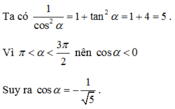Hãy nhập câu hỏi của bạn vào đây, nếu là tài khoản VIP, bạn sẽ được ưu tiên trả lời.

Các bước biến đổi. Bạn tự tìm kết quả nhé!
1) \(\left(\sin x-\cos x\right)\left(\cos^2x+\cos x.\sin x+\sin^2x\right)+\cos^2x-\sin^2x=0\)
<=> \(\left(\sin x-\cos x\right)\left(1+\cos x.\sin x\right)+\left(\cos x-\sin x\right)\left(\cos x+\sin x\right)=0\)
<=> \(\left(\sin x-\cos x\right)\left(\cos x+1\right)\left(\sin x+1\right)=0\)
2) \(\left(\sin^3x-2\sin^5x\right)-\left(2\cos^5x-\cos^3x\right)=0\)
<=> \(\sin^3x\left(1-2\sin^2x\right)-\cos^3x\left(2\cos^2x-1\right)=0\)
<=> \(\sin^3x.\cos2x-\cos^3x.\cos2x=0\)
<=> \(\cos2x\left(\sin^3x-\cos^3x\right)=0\)
3) ĐK: x\(\ne\frac{\pi}{2}+k\pi\)
\(\cos x\left(3.\tan x+2\right)-\left(3\tan x+2\right)=0\)
<=> \(\left(\cos x-1\right)\left(3.\tan x+2\right)=0\)

a, 3sin2x -5sinx +2=0
<=> sinx =1 hoặc sinx = 2/3
<=> x=π/2 +k2π ; x=arcsin2/3 + k2π hoặc x= π - arcsin2/3 + k2π
b, bn có chép đúng đề bài không.Mình tính ra lẻ
b) phần b giải ntn nhé
\(2\left(cos^2x+sin^2x\right)-sinx-cosx-1=0\Leftrightarrow2.1-sinx-cosx-1=0\Leftrightarrow sinx+cosx=1\Leftrightarrow\sqrt{2}sin\left(x+\dfrac{\pi}{4}\right)=1\Leftrightarrow\left[{}\begin{matrix}x=k2\pi\\x=\dfrac{\pi}{2}+k2\pi\end{matrix}\right.\)

Nhân 2 vế với \(sin4x\) sau đó tách:
\(\frac{sin4x}{cosx}+\frac{sin4x}{sin2x}=\frac{2sin2x.cos2x}{cosx}+\frac{2sin2x.cos2x}{sin2x}=\frac{4sinx.cosx.cos2x}{cosx}+\frac{2sin2x.cos2x}{sin2x}\)
Rồi rút gọn

\(sina+sinb+sinc+3=0\)
\(\Leftrightarrow\left(sina+1\right)+\left(sinb+1\right)+\left(sinc+1\right)=0\)
Do \(\left\{{}\begin{matrix}sina\ge-1\\sinb\ge-1\\sinc\ge-1\end{matrix}\right.\) ;\(\forall a;b;c\)
\(\Rightarrow\left(sina+1\right)+\left(sinb+1\right)+\left(sinc+1\right)\ge0\)
Dấu "=" xảy ra khi và chỉ khi \(sina=sinb=sinc=-1\)
\(\Rightarrow cosa=cosb=cosc=0\Rightarrow cosa+cosb+cosc+10=10\)
b/ \(sinx=1-sin^2x\Rightarrow sinx=cos^2x\)
\(\Rightarrow sin^2x=cos^4x\Rightarrow1-cos^2x=cos^4x\)
\(\Rightarrow cos^4x+cos^2x=1\Rightarrow\left(cos^4x+cos^2x\right)^2=1\)
\(\Rightarrow cos^8x+2cos^6x+cos^4x=1\)





Do \(\alpha\in\left(\frac{\pi}{2};\frac{3\pi}{4}\right)\Rightarrow sin\alpha>0;cos\alpha< 0;tan\alpha< 0\)
\(\frac{tana}{cota}=\frac{\sqrt{5}-1}{\sqrt{5}+1}\Leftrightarrow tan^2a=\frac{\sqrt{5}-1}{\sqrt{5}+1}=\frac{\left(\sqrt{5}-1\right)^2}{4}\Rightarrow tana=\frac{1-\sqrt{5}}{2}\Rightarrow cota=\frac{-1-\sqrt{5}}{2}\)
\(1+tan^2a=\frac{1}{cos^2a}\Rightarrow cos^2a=\frac{1}{1+tan^2a}=\frac{5+\sqrt{5}}{10}\)
\(\Rightarrow sin^2a=1-cos^2a=\frac{5-\sqrt{5}}{10}\)
\(sin2a=2sina.cosa=2tana.cos^2a=-\frac{2\sqrt{5}}{5}\)
Thay vào ta được:
\(P=...\)
Bạn tự thay số và bấm máy